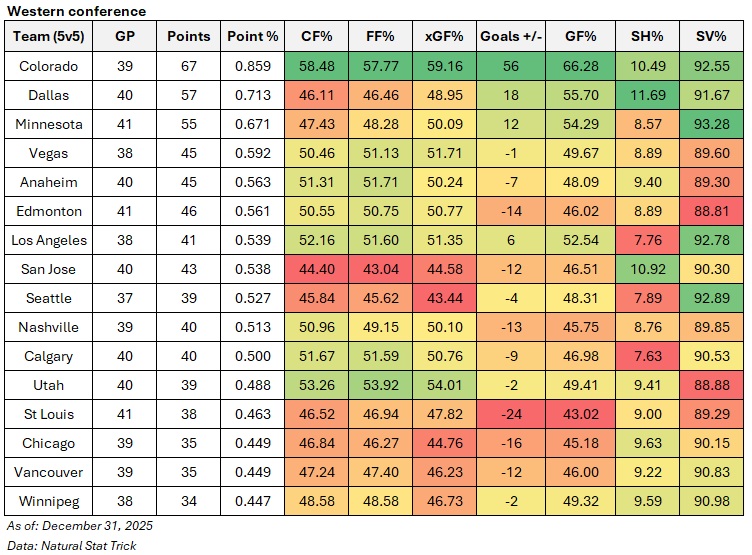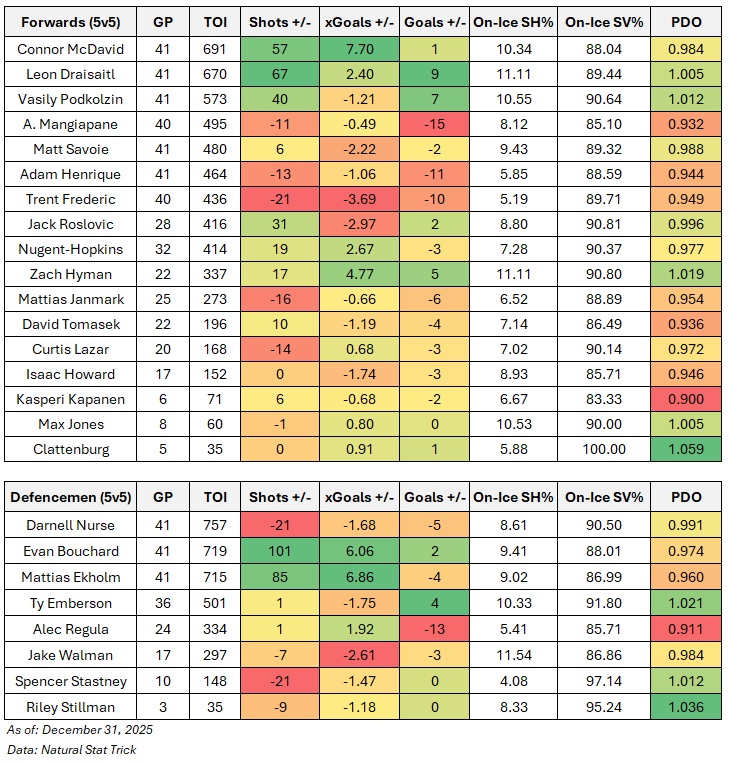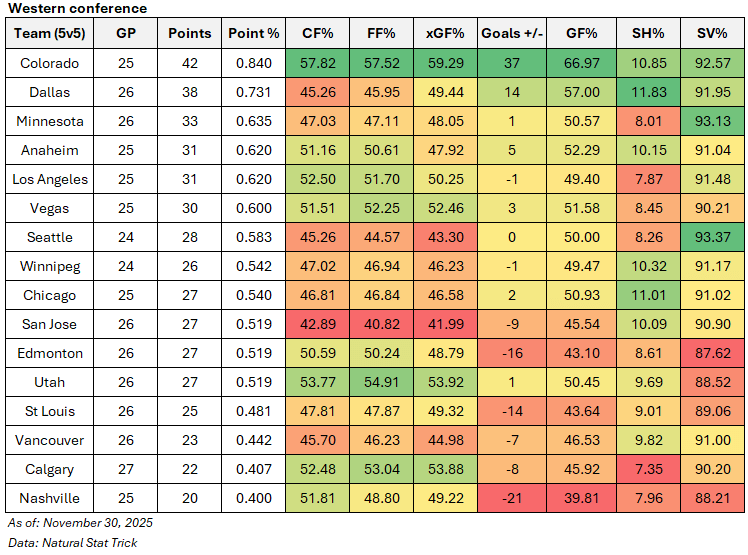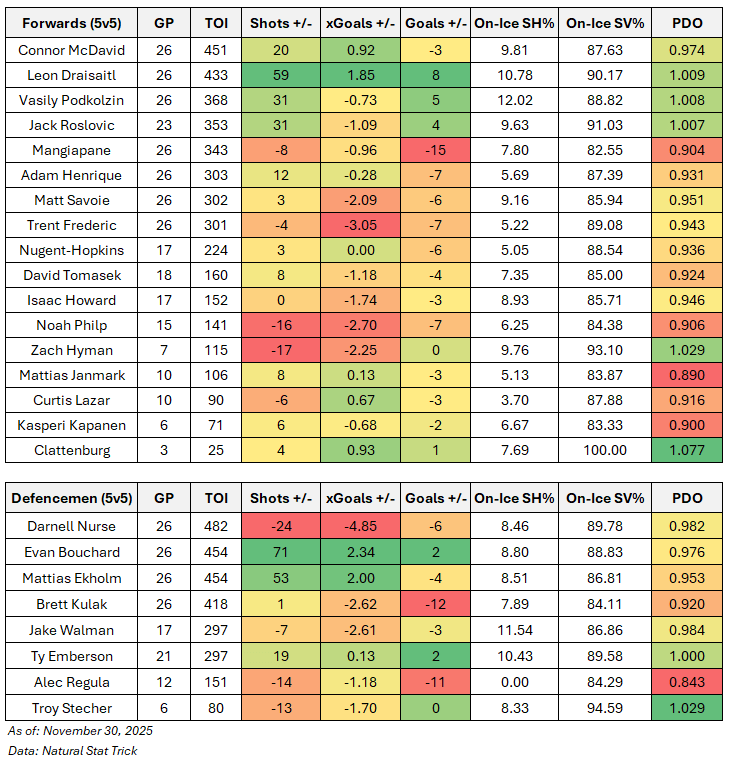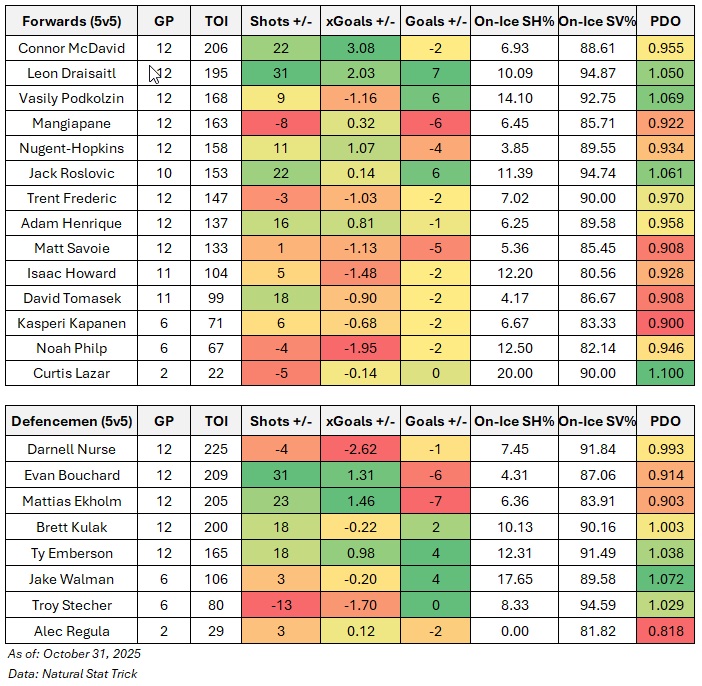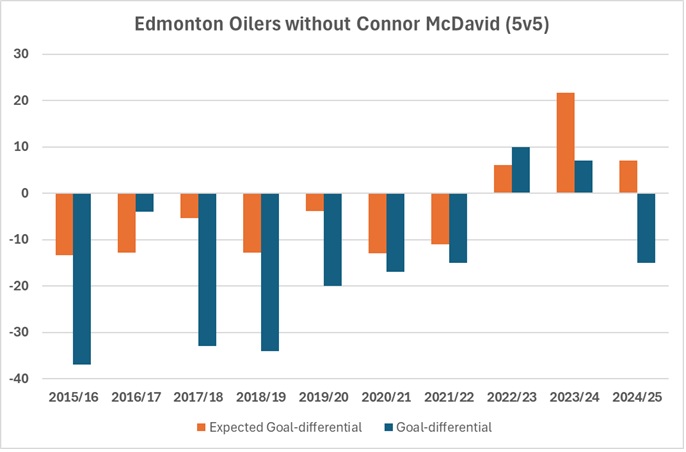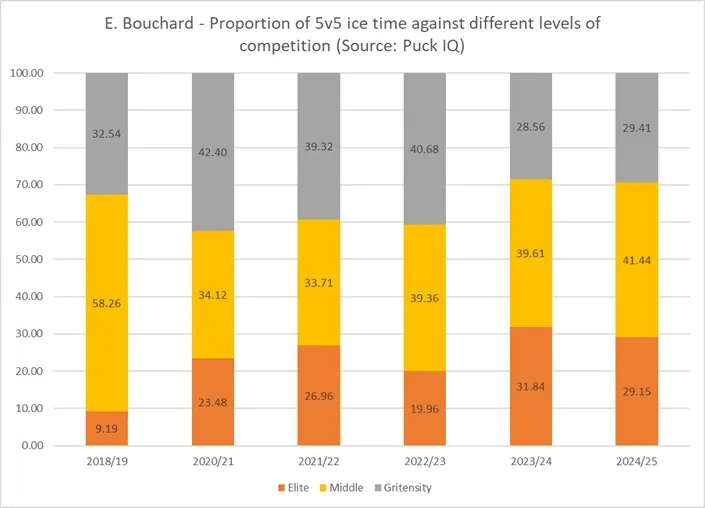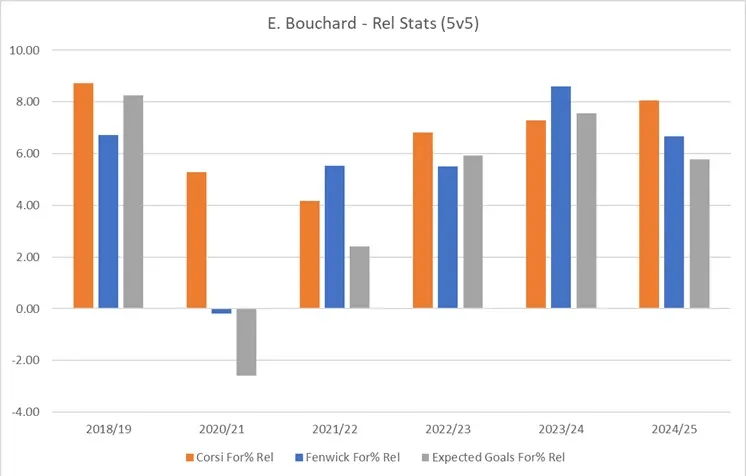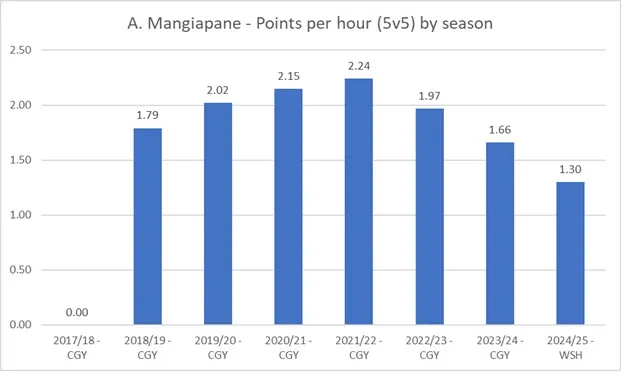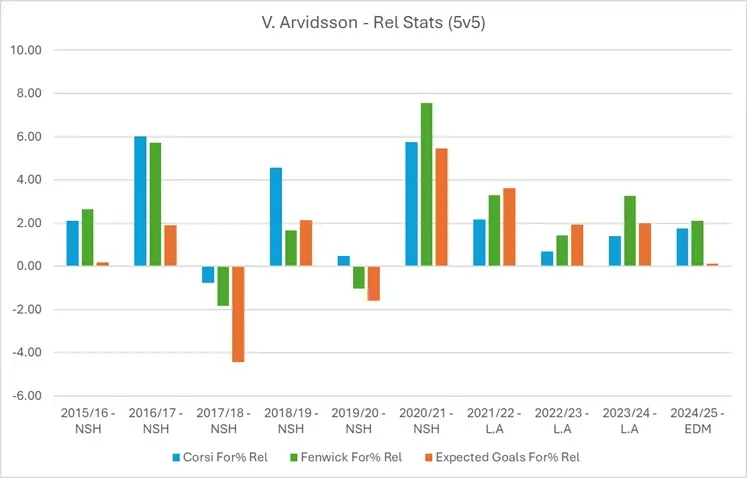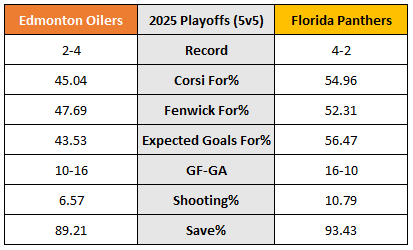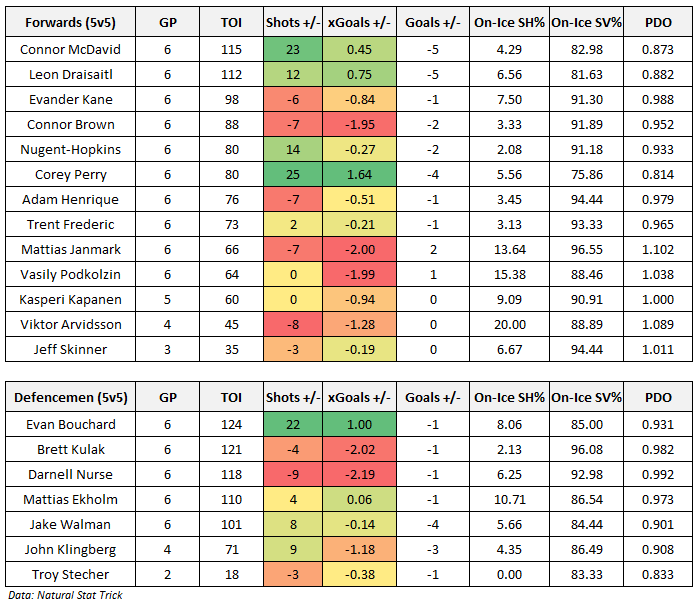While things look great for the Edmonton Oilers – currently sitting first in the Pacific division with 46 points in 41 games – it’s not likely to last very long. Their actual points percentage is 0.561, which is third behind Vegas and Anaheim in the Pacific, sixth in the west and sixteenth in the league. Their actual goal-share in all-situations is +1, but that’s largely driven by their success on the powerplay. At even-strength, their goal-differential is -13, a goal-share of only 46 percent that ranks 26th in the league. And all of their underlying shot-share metrics at even-strength are barely at the break-even mark.
The Oilers are nowhere near where they were last season at this time. And it’s not what you’d expect from a team with championship aspirations.
The good news is that the rest of the Pacific division is a bit a joke right now. Vegas currently has the best goal differential with 0 (yes zero, not a typo). And only Los Angeles has a goal-share above 50 percent at even-strength. Edmonton has shown signs of progress in December, but they still lack that consistent play and production that’s expected from a high-end team.
Western conference context
Below are the even-strength (5v5) numbers for each team in the western conference (sorted by points percentage). These include goal-share results and shot-share metrics, which give us a sense of which teams have strong underlying processes — and which are over- or underperforming. At the end of the table, you’ll find each team’s shooting and save percentages. A simple heat map highlights which clubs are excelling (green) or struggling (red). Note: all shot-share metrics are score- and venue-adjusted per Natural Stat Trick’s methodology.
The Oilers have definitely made some progress since my last check-in at the end of November when they were 11th in the west with a 0.519 points percentage, even surpassing the cluster of teams that I had predicted. I’d have a lot more confidence in them if they can string together a set of ten games or so where their shot-share numbers are above 53 percent and their goaltending improves. They can’t string more than two wins together, which could open the door for another team to eventually pass them.
Again, the only real dominant team in the west is Colorado, with Dallas and Minnesota riding some excellent goaltending to stick around in that contender cluster. Vegas and Anaheim should be able to stick around just based on their underlying shot-share numbers, but they also appear to have some goaltending issues. Los Angeles is in that group as well, and have the goaltending which could propel them higher. And it’ll be interesting to see if Nashville, Calgary or Utah can leap frog some of the pretenders to lock up that eighth spot.
Evaluating individual players
Here’s a quick look at the Oilers’ skaters, and their on-ice numbers so far sorted by ice time. Included is each player’s on-ice shot differential, expected goal differential and actual goal-differential. And for additional context, each player’s on-ice PDO is captured. A basic heat map is applied to show how players compare within their cohort.
Not a whole lot to note since the last check-in. Mangiapane’s been healthy scratched, which isn’t surprising since his performance and results have been poor. And as mentioned last time, Savoie was likely to continue sliding just based on his on-ice numbers. He’s even seeing his minutes cut back, which I don’t think is a bad idea. He could use a little reset and the coaching staff could test out some wingers on that second line with Draisaitl and Podkolzin.
The bottom six is a dump at this point. In an ironic 911 minutes without McDavid or Draisaitl on the ice at even-strength this season, the Oilers have been outscored 19-43 – a pathetic goal-share of only 30.7 percent (-24 goal differential). Remember- these depth players get 45 percent of the team’s total ice time and this is the best that they can muster. And it’s hard to believe things are going to turn around any time soon. Their shot-share numbers without one or both of the Glimmer Twins deployed only hovers around 45 percent. Now might be a good time to promote some of the kids in the AHL to see what they have and if they can help turn things around.
Nothing really noteworthy on the back-end. Nurse is still a problem that needs to be managed. And the team desperately needs Walman back to help stabilize things. I do suspect that the bottom six is struggling because of the instability on the back-end, but would need to dig in further.
Data: Natural Stat Trick
